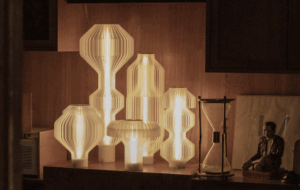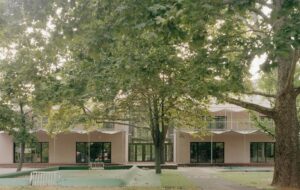|
|
||
|
As the London School of Architecture presents its first crop of graduates, we spoke to its chair of academia about the thinking behind the initiative ICON One of the main goals of the LSA is to bring academia and practice together more. How does this benefit the architecture industry as a whole? What can practices learn from students? NIGEL COATES It is, but let’s not assume that means embedding the learning experience entirely in the world of practice. Rather, we want an exchange between academia and the working world of architecture that overcomes the usual antipathy between the two. The need for practice to recognise ‘research’ as a means to renew its ideas is on the rise. Practices like OMA, Gehry Partners and Assemble have this extra side built in, but many others could benefit from widening their appetite for new and critical ideas. Likewise new practice recruits normally get a shock when they’re asked to do a technical drawing of a door or a window. We want to barge through these doors – or set up a revolving door between the two. So it’s a two-way learning process. Students can inspire the practice with unconventional ideas and vice versa. ICON The founding principles of the LSA are quite revolutionary, but as with all pioneering ideas, only time proves which aspects are successful. How do you measure the impact of these ideas? What changes in the industry would show that this new way of teaching architecture is better than other traditional methods? NC We don’t claim our approach is better, but that it’s an alternative from which all can learn. As an experienced teacher of architecture, I believe that any academic context must compensate for its weaknesses – for example when I first went to the Royal College of Art, I thought the school was too small to present a variety of approaches, so I set up competing research studios. At the LSA a limitation may be that pragmatism dominates, which I am all too aware of. We encourage students to contest accepted methods in practice as well as learn from them. We are talking about a school that works within a framework of alternatives, and not simply a training ground. As to measuring the course, as the school matures we can apply the usual metrics – like applications, student designations and institutional review – but in the end the school has to build its own distinct reputation. ICON What inspired you personally to join the LSA? The school looks to take many contemporary issues with the field of architecture – student debt, lack of diversity. Is there any one issue you want to focus on? If so, how do you go about making changes? NC I’ve always believed in strident original thinking tied to the evolutionary process that design needs, which is the basis on which I shaped the architecture department at the RCA. When I left in 2011, the college was coming increasingly under pressure from reduced government funding, and was turning into a more of a business than a resource. I thought then that this independent spirit in architectural education could sustain a new school. But it was Will Hunter that shaped this desire into a reality. My experience joined up well with Will’s sheer drive, and the determination to make the school a reality. ICON The school is deeply rooted in the context of London – students don’t have a fixed studio, so instead they wander around the city. How does this improve their learning experience? Do other schools lack this connection to their surroundings? NC Throughout my teaching career I’ve insisted that projects be set in London. There were two clear reasons: London is so multi-various that it offers a myriad of case study opportunities; and second I want students to be able to study an area up close. I believe in a geo-social realism that becomes magic in the process of design. You can’t do that if your project is set in Las Vegas or on the moon. This past year the second-year students have been located in a studio at Somerset House which is about as central in London as you can get. It’s a base from which the school can engage with the city through the contexts of the projects but also switching locations of events like our talks programme. Crits happen all across town – usually in spaces borrowed from members of our practice network. At least that’s how it works for now. ICON The LSA just celebrated its first class of graduates. What did you learn from the school’s first two years? What would you change going forward, and what is your ideal vision for the future of the school? NC Obviously this is the first year of graduates, and while I’m pleased with the achievement, we’ve got a long way to go. I’d like the quality of both the debate and the work to continually shift in innovative ways. Among the thesis projects there were a few that were genuinely inventive but there were some that could have grappled with spatial expression. Within the practice framework we’ve set up, we need to press for ‘academic’ design skill, and to encourage the tutors drawn from it to raise their theoretical ambitions. Every school is an ongoing experiment and the LSA is no different. Personally I’d like to see more speculation, more freedom of spirit, and more willingness to draw freehand even though that’s an issue in many schools. I’ve insisted on LSA students keeping active sketchbooks, and I’d like to see more playful model-making. That said, the thesis projects this year are remarkably consistent – crisp, clear and confident. Our long-term aim is to demonstrate the potentially unique chemistry between practice and academia, and I believe we’ve made a very good start. Nigel Coates is chair of the academic court at the London School of Architecture |
Words Emma Le Leslé |
|


















